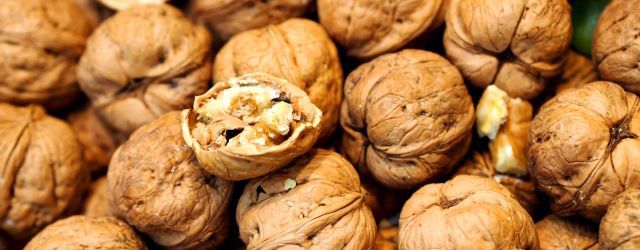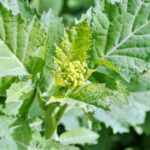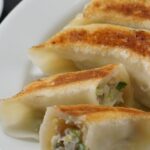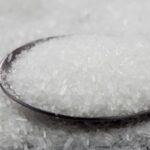
On October 13, 2022, the Consumer Affairs Agency announced the start of invitation for public comment on the “Partial Revision of Food Labeling Standards.” The public comment was closed on November 12.
Summary of the revision
According to the public comment procedure, the outline of the revision draft is as follows.
- “Walnut”, which contains a substance that causes allergy, is currently on the list of recommended labeling for allergen. However, the result of the Report on the National Survey of Health Damage Caused by Immediate-type Food Allergy, etc. has led to the policy that labeling is required, and “walnuts” will be added to the list of Specified allergens (mandatory labeling items for allergens in Japan).
- In the future, it is expected that foods derived from rapeseed genetically modified to produce eicosapentaenoic acid (EPA) and docosahexaenoic acid (DHA) will be distributed in Japan after a safety assessment by the Ministry of Health, Labour and Welfare. Therefore, such rapeseed is to be added to the list of specified genetically modified agricultural products to be labeled under the labeling system for genetically modified foods.
Revision of mandatory allergen labeling items
Allergen labeling is required for “foods containing processed foods made from Specified Allergens (for mandatory labeling items for allergens in Japan) (including those made from said processed foods and excluding those whose antigenicity is not recognized) and additives derived from Specified Allergens (excluding those whose antigenicity is not recognized and flavour).” Appended Table 14, which specifies Specified Allergens, will be revised as follows. (Revised parts are underlined in red letters)
| Appended Table 14 (before the revision) | Appended Table 14 (after the revision) |
|---|---|
| Shrimp Crab Wheat Soba (Japanese buckwheat noodle) Egg Milk Peanuts |
Shrimp Crab Walnut Wheat Soba (Japanese buckwheat noodle) Egg Milk Peanuts |
Walnuts were previously listed as an item for which labeling was recommended as “Specified raw material equivalents” but this will now be shifted to an item for which labeling is mandatory.
About the addition of rapeseed producing EPA and DHA
Matters concerning genetically modified foods are covered in “Appended Table 17 (Target Agricultural Products and Processed Foods) and Appended Table 18 (Target forms and characteristics and Processed Foods)”, of which Appended Table 18, which specifies forms and characteristics, will be revised. (Revised parts are underlined in underlined in red letters)
Appended Table 18 (before the revision)
| Form and characteristics | Processed foods | Target agricultural products |
|---|---|---|
| Stearidonic acid production |
1 Food made mainly from soybeans (except ones which do not have form and characteristics listed in the upper table (left) after being defatted) 2 Food made mainly from an ingredient listed in 1 | Soybean |
| High lysine |
1 Food made mainly from corns (except ones which do not have form and characteristics listed in the upper table(left)) 2 Food made mainly from an ingredient listed in 1 | Corn |
Appended Table 18 (after the revision)
| Form and characteristics | Processed foods | Target agricultural products |
|---|---|---|
| Stearidonic acid production | 1 Food made mainly from soybeans (except ones which do not have form and characteristics listed in the upper table (left) after being defatted) 2 Food made mainly from an ingredient listed in 1 |
Soybean |
| High lysine | 1 Food made mainly from corns (except ones which do not have form and characteristics listed in the upper table(left)) 2 Food made mainly from an ingredient listed in 1 |
Corn |
| Eicosapentaenoic acid (EPA) production | 1 Food made mainly from rapeseed (except ones which do not have form and characteristics listed in the left table 2 Food made mainly from an ingredient listed in 1 |
Rapeseed |
| Docosahexaenoic acid (DHA) production |
Although rapeseed is listed as a target agricultural product in Appended Table 17, no requirements are set for its processed foods. As a result of this revision, it will be necessary to confirm the characteristics (EPA/DHA production) of items that fall under the category of “items whose main ingredient is rapeseed (and items whose main ingredient is food whose main ingredient is rapeseed).”
Upcoming schedules
In the revision draft based on invited public comments, the transitional measures period and the effective date regarding Appended Table 14 (allergen labeling) have not yet been determined.
(Effective Date)
Article 1 This Cabinet Office Ordinance comes into effect as of the date of promulgation. However, the revised provisions of Appended Table 14 shall come into effect as from XX(date) XXX(month), XXXX(year).
(Transitional Measures)
Article 2 With regard to the labeling of processed foods (excluding processed foods for business use) which are manufactured, processed, or imported and processed foods for business use to be sold by from the date of enforcement of the revised provisions prescribed in the proviso of the preceding article to XX(date) XXX(month), XXXX(year) and processed foods for business use which are sold by the same date, the provisions then in force shall remain applicable notwithstanding the provisions of Appended Table 14 of the Food Labeling Standards revised by said revised provisions.
A report on the revision draft was published on December 13, 2022. The transitional period is until March 31, 2025.
(Effective Date)
Article 1 This Cabinet Office Ordinance comes into effect as of the date of promulgation.
(Transitional Measures)
Article 2 With regard to the labeling of processed foods (excluding processed foods for business use) manufactured, processed, or imported from the date of enforcement of this Ordinance to March 31, 2025, and processed foods for business use to be sold by the same date, the provisions then in force shall remain applicable notwithstanding the provisions of Appended Table 14 of Food Labeling Standards revised by this Ordinance.
If the allergen labeling currently covers only seven items, it will be necessary to re-check from the stage of product specification in order to add a new indication. Especially in the case of handling imported foods and ingredients it must be carefully checked whether or not walnuts are contained (because many countries collectively handle them as “nuts”).
As for walnuts, the revision is implemented in response to a background such as an increase in the number of cases of allergy. Even during the transitional measures period, it is important to reconfirm information management, such as ingredient specifications, to be able to respond to inquiries from consumers.
Reference
Regarding Comments invitation on partial revision draft of Food Labeling Standards
Share/Like/Follow:
Newsletter Signup
We issue monthly e-newsletters, which provide you with the latest updates on food labeling/regulations in Japan.
If you want to make sure to not miss any issue, please click below.
Related Service
Research Services on Ingredients & Food Labeling -For the Japanese Market-
We verify the conformity of ingredients and additives with the standards for use in Japan based on specifications such as formulation lists. We also verify the conformity of the proposed labeling of ingredient names, nutrients, etc. with the labeling standards based on specifications such as formulation lists.

Label bank Co., Ltd. CEO (Founder)
Born in Japan. Working on solving various issues related to food labeling operations. Also regularly gives lectures for various organizations in Japan.
Co-author of ‘Latest edition: Guide book Food Labeling Law and related business practical points – from scratch (Japanese version only)’ (DAI-ICHI HOKI CO., LTD/2019).






